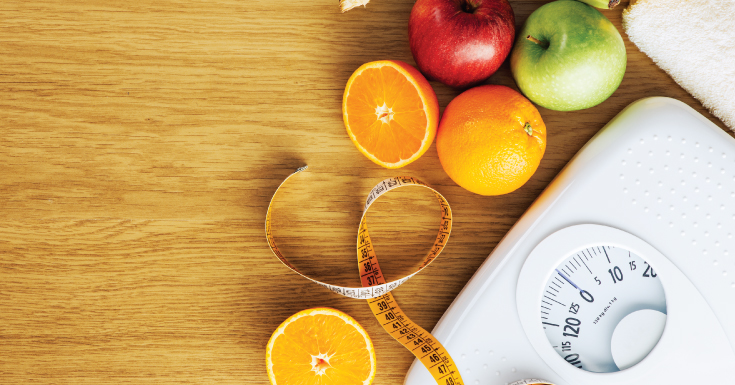A diet that has recently gained popularity, the GOLO diet is designed based on getting insulin under control. Does it really help us to lose weight effectively? Here’s a closer look at this weight loss plan.
If you frequently participate in discussions about diet and weight loss on social media, the buzzword #GOLO seems to be emerging quite frequently. What is it exactly and why is it gaining popularity?
“GOLO” is derived from a weight loss plan called the GOLO Metabolic Plan developed by GOLO, a health and wellness company based in the US. According to GOLO, the plan brings together a combination of right foods to help users with managing and optimizing glucose and insulin levels.
“The GOLO Metabolic Plan improves weight loss in two ways: minimizing or eliminating muscle loss and maximizing fat loss; and providing proper nutrition that includes healthy fats and carbohydrates which eliminates nutritional imbalances and promotes steady weight loss and better health,” the company says, adding that dieters can eat more food and keep to a 1300 to 1800 caloric intake each day on this plan. “By following the GOLO Metabolic Plan you can expect to lose an average of 1-2 pounds of fat per week.”
In a nutshell, GOLO helps you to lose weight through insulin management instead of strict limitation of carbs or fat. This makes it an appealing diet plan as it gives dieters more flexibility in terms of watching what they eat. However it does come with a fairly high cost: in order to learn how to do it correctly you would need to purchase the diet’s booklets as well as a 30-, 60-, or 90-day supply of its Release weight-loss supplement which is priced from USD40 to ensure successful weight loss.
Is it worth the investment? Testimonials on the company’s website show several people who’ve had great success with GOLO, losing more than 100 pounds in a year or 20 or 30 pounds in a few months. However, it has mixed reviews elsewhere.
Healthline (healthline.com) gave it a 2.75 out of 5 diet score highlighting that “It may help you lose weight, lower blood sugar levels and improve health. Yet, it can be pricey and challenging – and needs to be more thoroughly researched to determine its effectiveness.”
Another website, Women’s Health (www.womenshealthmag.com) states that: “Some of the GOLO diet principles are straightforward weight-loss methods, such as eating whole foods and aiming for a caloric deficit appropriate for your age and weight. But there’s not a ton of data on the GOLO diet or the supplements it uses, so proceed with caution.”
As for user reviews, this plan scored 2.8 out 5 on Amazon Customer Reviews. A verified customer gave it five stars with positive feedback: “I basically just started this plan but after trying several “fad” diets, this is a lifestyle plan that I can live with.” Another user recommended the GOLO release supplement saying that “this is the first diet supplement that worked for me.” However, there were also critical reviews which said that the plan is “not worth the money” and “did not work” for the users.
Experts also point out that GOLO doesn’t have substantial studies to back it up. “Although the program has a good understanding of the link between insulin resistance and weight gain (especially belly fat), it does not appear to be validated by substantial research. In the claims made on the website, the company does not reference any published research studies,” Cleveland Clinic, a non-profit academic medical centre observes.
On the other hand, the principles of the plan are recommended by professionals. Matthew Black, a registered dietitian at the Ohio State University Wexner Medical Center in Columbus notes that the key elements of GOLO offer the same strategies for a healthy diet which include reducing calories and eliminating processed food as well as implementing an exercise plan.
The bottom line is that there is no guarantee any diet plans will work for you even if it worked for others You can definitely give GOLO a try, but if you are looking for plans that have peer-reviewed research to back up their claims, it’s better to opt for the Mediterranean diet, DASH diet, or flexitarian diet. Otherwise, keep everything simple and include portion control, calorie restriction, and regular exercise in your daily diet.
GOLO Diet: Pros And Cons
Pros
- recommends a healthy eating plan that prioritizes whole foods including fresh fruits, vegetables, lean protein, nuts and whole grains
- recommends reducing or eliminating processed food
- caloric intake of up to 1800 calories per day is doable for most people
Cons
- lack of peer-reviewed research published in a medical journal on the GOLO diet.
- reliance on a supplement which comes with potential safety issues and does not come with substantial evidence it works for weight loss
- plan is costly for a lot of people
Example of a GOLO Daily Meal
Breakfast: 1 fat, 2 proteins, 2 carbohydrates, 1 vegetable
- 2 hardboiled eggs,
- Overnight oats that includes zucchini, chia seeds, and coconut flakes
Lunch: 1 fat, 2 proteins, 1 carbohydrate, 2 vegetables
- Chicken
- Salad greens
- Sweet potatoes
- Coconut oil
Snack: Low calorie vegetable
- Celery sticks
Dinner: 1 fat, 1 protein, 1 carbohydrate, 2 vegetables
- Chicken
- Broccoli
- Sweet potatoes
- Coconut oil (cooked together with foods above)
Source: www.everydayhealth.com/diet-nutrition/golo-diet; Youtube channel

















